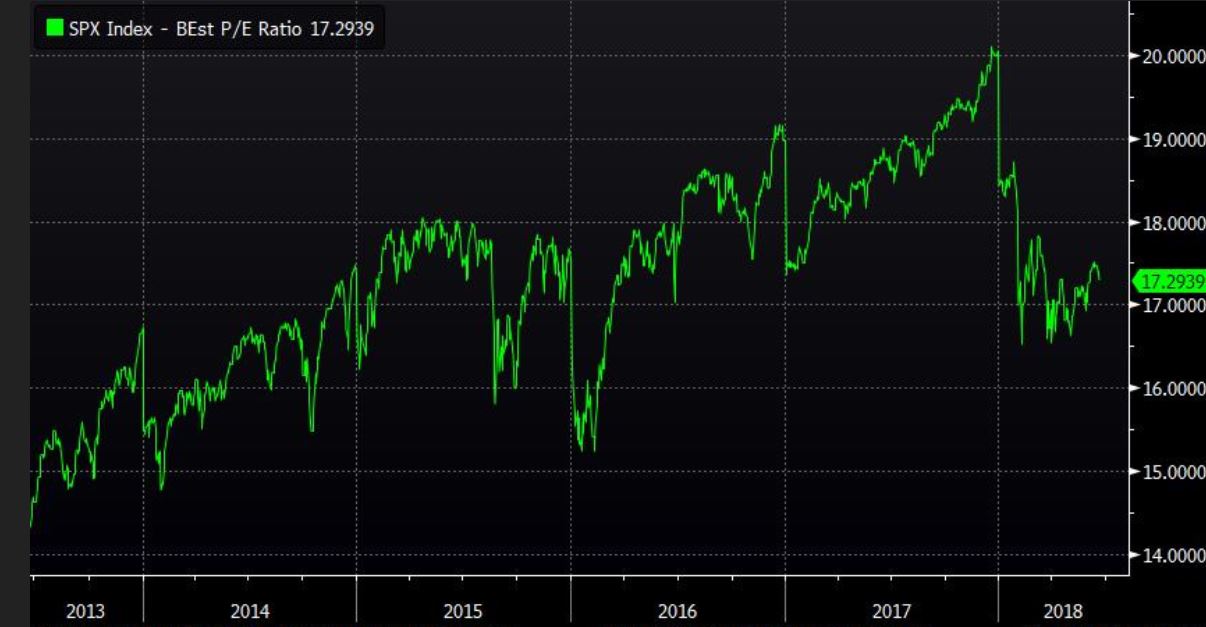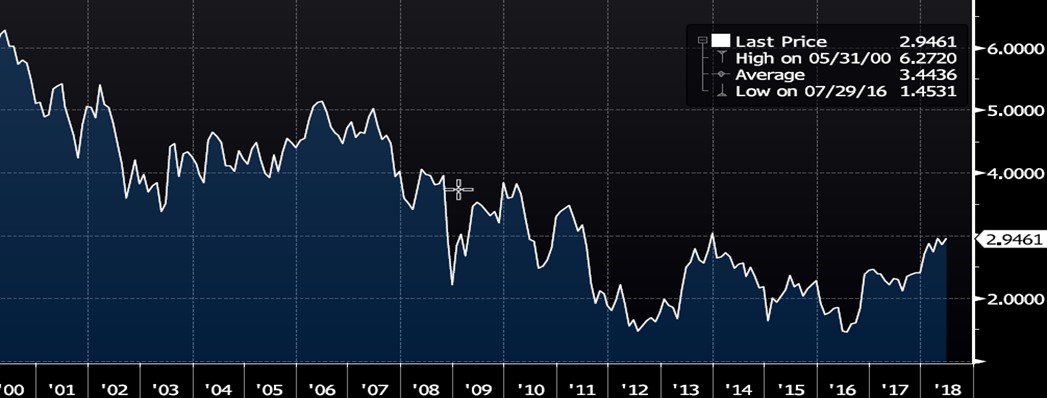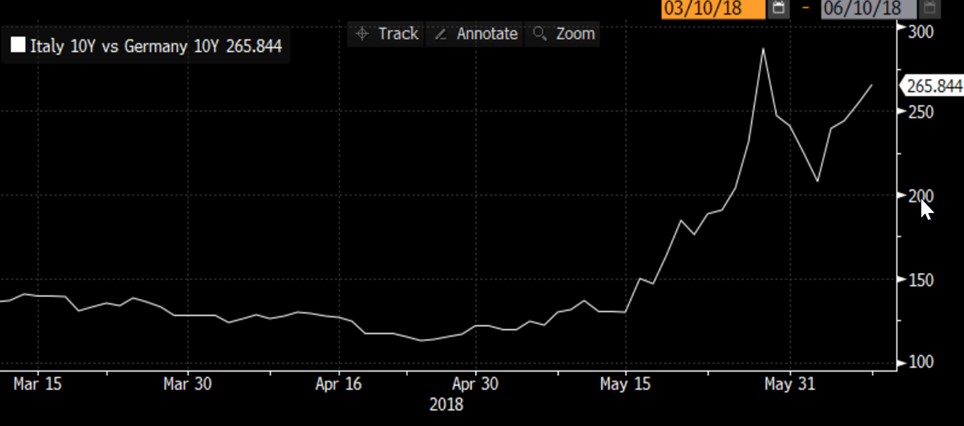With the hindsight of the latest G7 meeting we are clear. Growing trade tensions will eventually hit superior growth

Let us have a look at the twitter of Trump:
PM Justin Trudeau of Canada acted so meek and mild during our @G7 meetings only to give a news conference after I left saying that, “US Tariffs were kind of insulting” and he “will not be pushed around.” Very dishonest & weak. Our Tariffs are in response to his of 270% on dairy!
There are clear trading tensions after the G7 meeting. The clash between Trump and Trudeau was spectacular. Do not get me wrong: the Press might not have highlighted it so much but surely the US/European rift has further opened.
What was the direct response of the markets. Thankfully most of them were closed, but the fact that Trump mentioned that potentially import on cars could be taxed did not help. We will see market thoughts and reactions this coming week.
Forward US Price-to-Earnings Ratio

 Source: Bloomberg
Source: Bloomberg
Markets are still driven by continuous earnings growth. The forward price-to-earnings ratio of the S&P 500 is some 17.5. According to Bloomberg the key index for US companies, the S&P 500 Index, expects an earnings growth of a whopping 24% this year and some 7.5% next year.
US 10-Year Treasury Yield
 Source: Bloomberg
Source: Bloomberg
And this after an economic cycle expansion which lasted for over 120 months, close to a record in recent history. The cost of funds is still very low, and US yields have created a bottom over the last 5 years. The threshold of 3 percent for the 10-year US-treasury has recently been touched. Let us stress that those cycles of interest rates do not last 3 years or 5 years but rather 30 years. The last interest rate cycle had its peak in 1984 and its low in 2016, so we witnessed a 32-year-cycle.
Spread Italian 10-Year sovereigns vs 10-Year German sovereign
 Source: Bloomberg
Source: Bloomberg
How is the interest rate outlook in Europe? The European Central Bank has established the deposit rate at -0.4%. Peter Praet´s message to investors is to be ready for a pivotal discussion on the current policy of the ECB on the 14 June. Many observers thought initially the ECB would not move from its existing policy, but after recent comments, the ECB is not to flinch over Italy. The market has recently driven the spread of Italian 10-Year to German 10-Year sovereign bonds up by over 1% to 2.7%. In other words, if Italy had to refinance today its debt it would need to pay Eur 135 bn more than 3 weeks ago. Let us see what the ECB will tell us on the 14th June.
So far this year, the US indices did fare better than the European Indices. The S&P 500 is up by 6% and the Eurostoxx index is down by 1.6%. As the Euro was underperforming against most major currencies, ( year-to-date the USD is up 2%, the Yen is up 5% and the GBP is up 0.8% against the Euro), many European asset managers did a mistake to hedge all foreign exposure versus the Euro at the beginning of this year.
Most bond indices are down, and the bright spot have been commodities: the S&P GSCI is up by over 11% in Euros.
The above and the recent G7 meeting do not make it easy for investors to get it right in the second half of 2018. Late cycle, other threats than the economies are not helpful.
As one observer (Mohamed El-Erian) notes: Not long ago the major challenge facing a united G7 was the erosion in its ability to inform, influence and deliver superior global economic outcomes……Now the G7 faces the added challenge of facing the operational coherence…